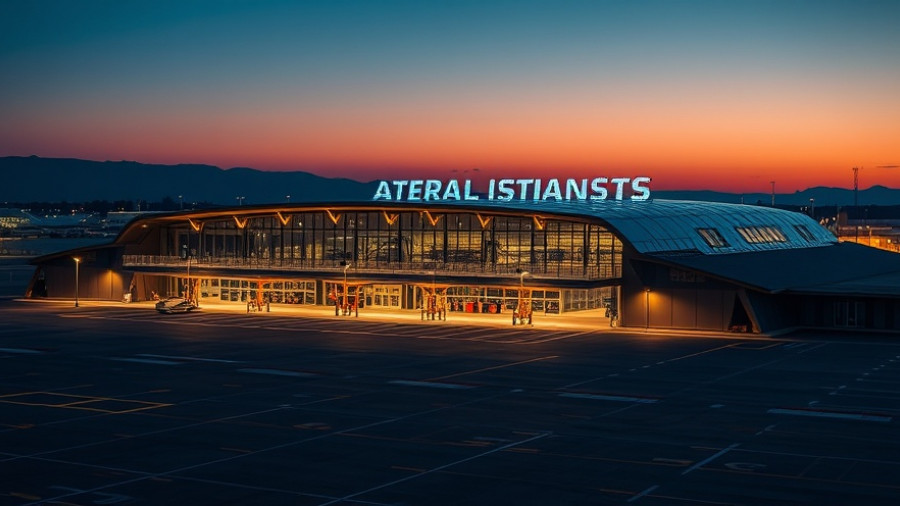
A Bold Step Forward: Introducing the Next-Gen Caterpillar 140 Motor Grader
Caterpillar has unveiled an impressive redesign of its top-selling motor grader, the Cat 140, marking a significant evolution in heavy machinery technology. This new model, set to launch in early 2026, enhances the legacy of versatility and reliability that Caterpillar is renowned for, all while adopting cutting-edge engineering methods to support modern construction demands.
Unmatched Features Customizable for Every Operator
One of the standout attributes of the next-gen Cat 140 is its extensive customization options. Operators can select between traditional levers, steering wheels, or ergonomic joysticks suited for different tasks and personal preferences. This flexibility not only caters to experienced operators who have preferred methods but also welcomes newer personnel who might find joystick controls more intuitive. According to Eric Kohout, product specialist at Caterpillar, this adaptation reflects an understanding of diverse operator styles and job requirements.
“The customization allows operators to feel comfortable and confident in their machinery,” Kohout stated. This capability is essential as grading can often be a complicated and nuanced task, requiring precision and familiarity with equipment. The new Cat 140 can be outfitted with various control systems, including advanced 3D grading technologies, which improve grading accuracy and reduce rework.
Enhanced Operator Comfort and Safety
The redesigned cab of the Cat 140 elevates operator comfort, featuring increased legroom, hip clearance, and safety adjustments like advanced seatbelts and harnesses. Drivers often face long hours in the cab, and Caterpillar’s commitment to comfort helps diminish fatigue. This comfort translates into more productive working hours as operators can maintain focus without succumbing to discomfort.
From improved visibility—thanks to larger windows and a rearview camera integrated into the 10-inch touchscreen—to thoughtful layout adjustments aimed at minimizing blind spots, safety during operation is paramount. As underscored by the development of the Cat 140, enhanced safety measures directly contribute to overall job site efficiency and effectiveness.
Streamlined Maintenance for Better Uptime
An efficient machine minimizes downtime, and the Cat 140 is designed with this principle in mind. With centralized access points for maintenance checks, operators can perform routine inspections quickly and effectively, ensuring that the machine stays operational when it's most needed. The new model also features synchronized maintenance intervals which further simplify upkeep.
Applications That Extend Beyond Grading
While the Cat 140 excels in its primary role for finish grading, road maintenance, and snow removal, it also boasts versatility that allows it to adapt to various job site needs. Lesser-known applications include ditching and heavy material handling—areas where the Cat 140’s power and customizable features can make an impactful difference for contractors seeking multipurpose machinery.
Moreover, the ability to add accessories or modify configurations for specialized tasks showcases Caterpillar’s understanding of the multifaceted demands placed on construction equipment today. As revealed during its unveiling at Bauma 2025, the emphasis on smart technology and operator adaptability positions the Cat 140 as an invaluable tool for modern contractors.
Looking Ahead: Impact on the Construction Industry
The investment in the redesign of the Cat 140 signifies Caterpillar’s commitment to meeting the evolving needs of the construction industry, especially in terms of efficiency, safety, and operator comfort. As more contractors look to maximize productivity and minimize costs, the technology packed within the next-generation Cat 140 could redefine industry standards.
Overall, the next-gen Cat 140 motor grader is poised to deliver enhanced performance—both on the job site and in terms of profitability for contractors—making it a worthwhile consideration for those looking to upgrade their machinery fleet.
If you are a contractor seeking the optimal balance of power, technology, and adaptability in your equipment, consider investing in the next-gen Cat 140. With its advanced features and customizable design, it is set to take the construction scene by storm.
 Add Row
Add Row  Add
Add 




Write A Comment